Ride 1. Guide Dog Statues at Canary Wharf. Ride 2. South of the River in 1814
Guide Dog Statues at Canary Wharf
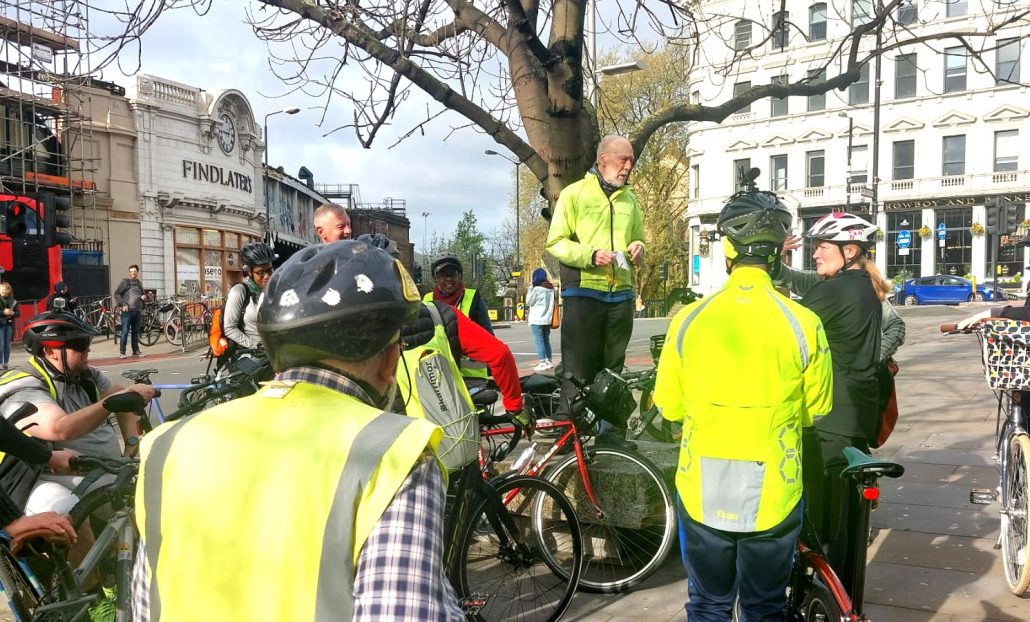
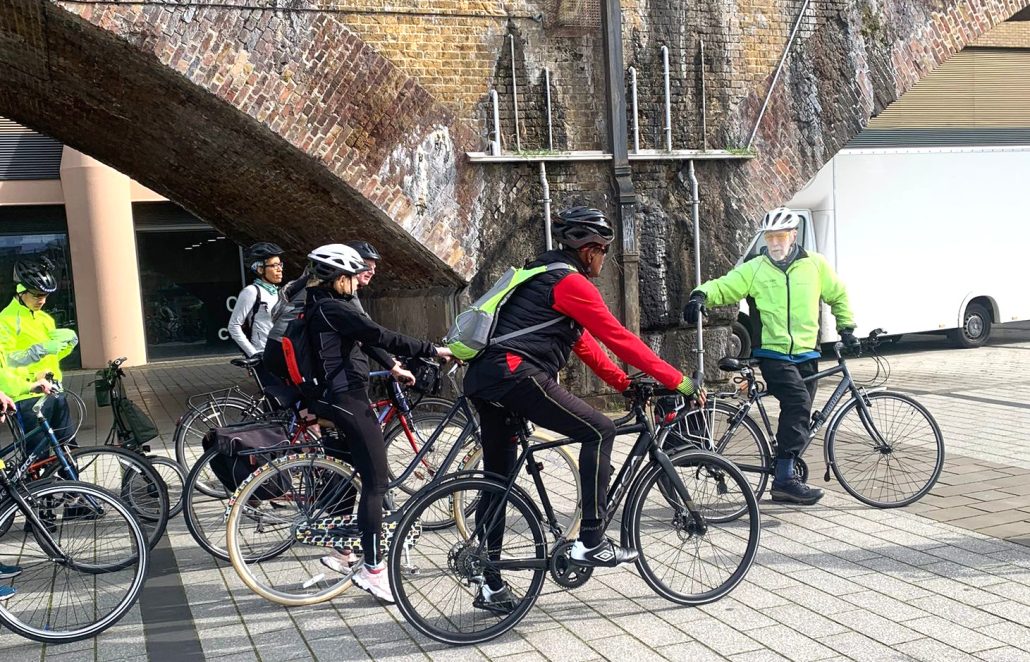
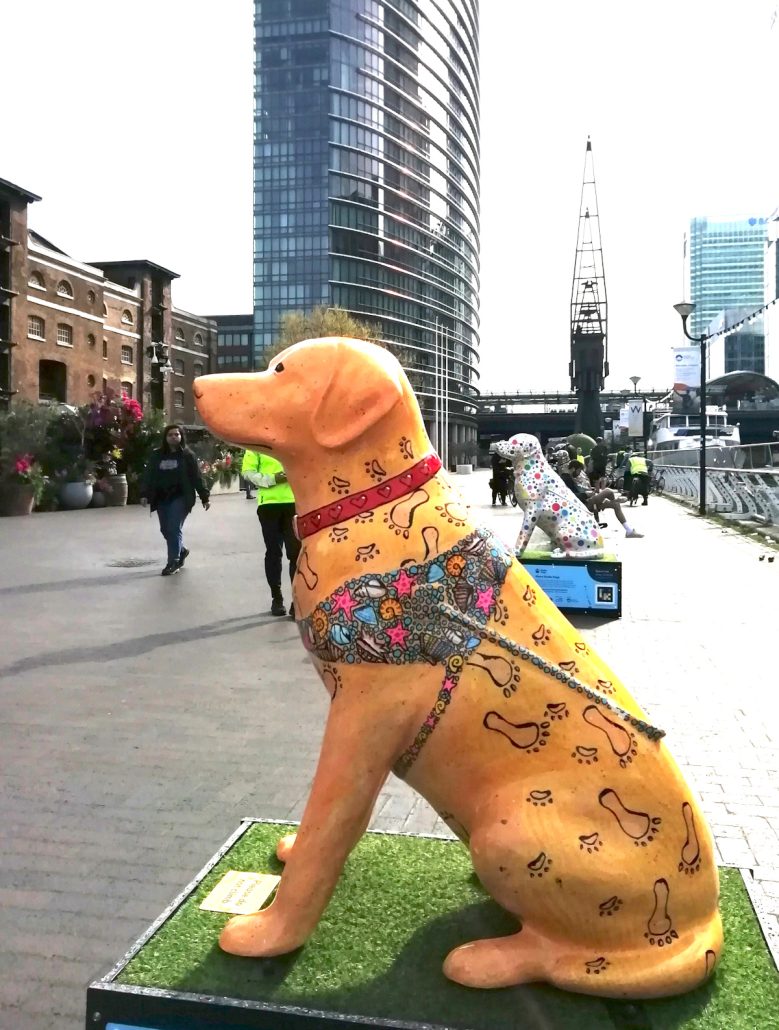
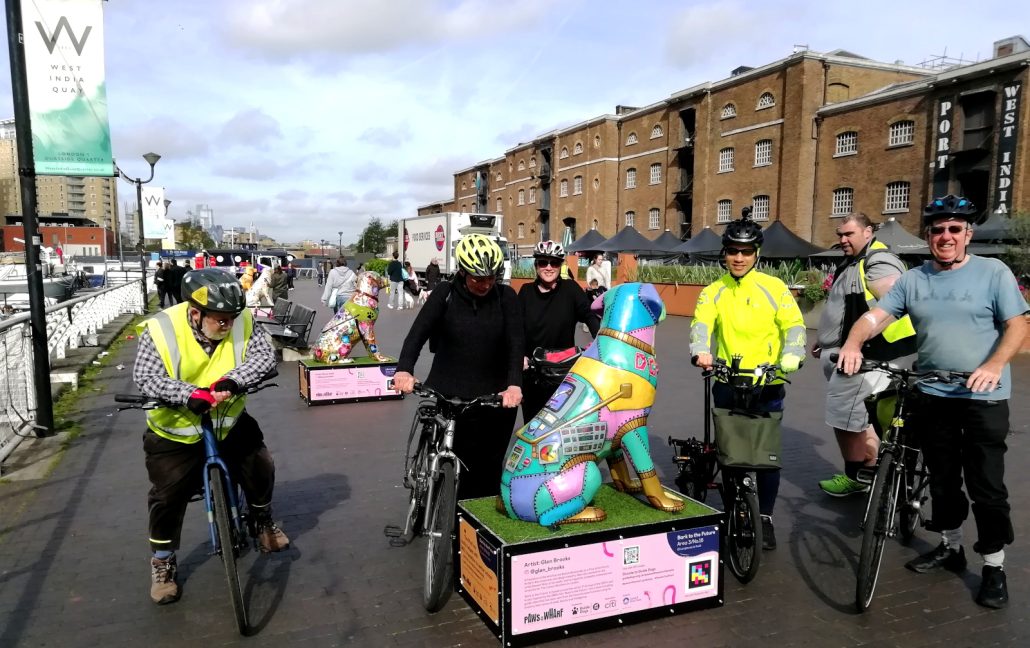
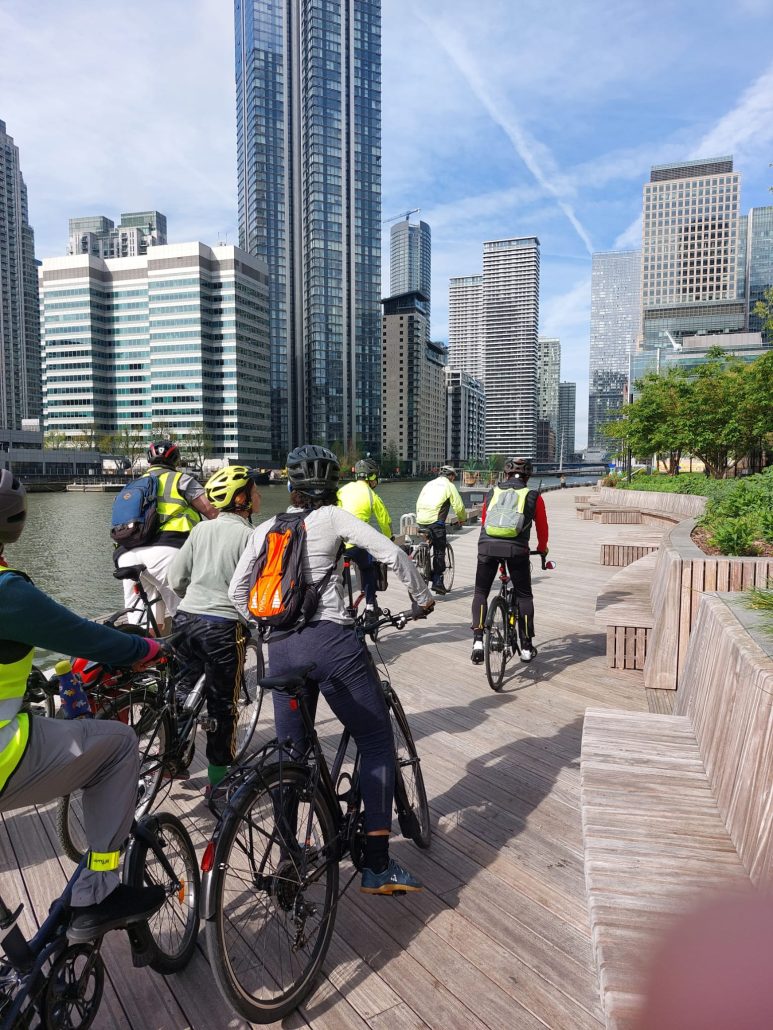

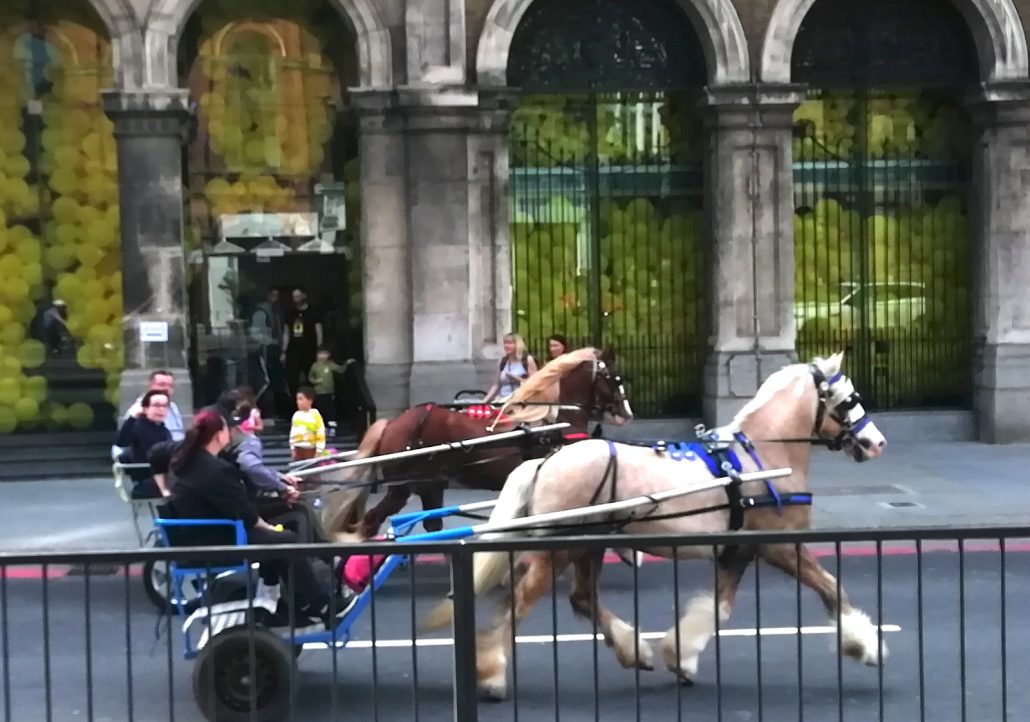
Ten cyclists joined ride leader Bruce next to the London Bridge Needle at the early hour of 9am. The aim was to ride to Canary Wharf and find as many of the artistically painted guide dog statues as possible. Details about this projest to raise funds for the Guide Dogs charity (the dogs will be auctioned in May with minimum bid of £2000) are at https://www.guidedogs.org.uk/paws-on-the-wharf/, also BBC post.
Set off across London Bridge in cool but sunny weather, looped down to Cycleway 3 and followd this all the way to Limehouse. Not the most scenic route, but probably the quickest. Passed Westferry DLR station and in to Canary Wharf at North Quay. And there they were – at least some of them. A row of splendidly decorated guide dogs. Took a photo and continued through the Elizabeth Line station (more dogs) and round to the newish developments at Wood Wharf. Amongst these is a branch of Mercato Metropolitana. Much smaller and more sanitized than the MM at the Ellephant and Castle. But still a good place to get a coffee..
After a break in the April sunshine started back b ywalking down the bendy path to the main Jubilee Line entrance where several more guide dogs were admired. Departed Canary Wharf along the Thames Parh past Westferry Cicrcus. Took the LCN13 route close to the Thames to Shadwell Basin and along the canals to St Kathernes Dock. A nice stretch of path is currently closed at Free Trade Wharf entailing a short diversion on to The Highway (very heavy traffic) then across King Edward Memorial Park. From St Katherines crossed inland to Cycleway 3 and returned to London Bridge via the Monument. From Tower Hill down to Lower Thames Street we were passed by a long stream of trotting horses (see pnoto). There muat have been about 50! Back a bit before 12, which suited ride leader Bruce as he had a train to catch.
Have done the route before wihtout the dogs, but they certainly added interest. Must get my bid in for maybe the one entitled “Bark to the Future” – would look nice on the balcony. Many thanks to David and John for bark, sorry back, marking. Route at https://www.google.com/maps/d/u/0/edit?mid=1exSNQCrUKdrQSijtSjozmkwBOhMgDLY&usp=sharing
South of the River in 1814
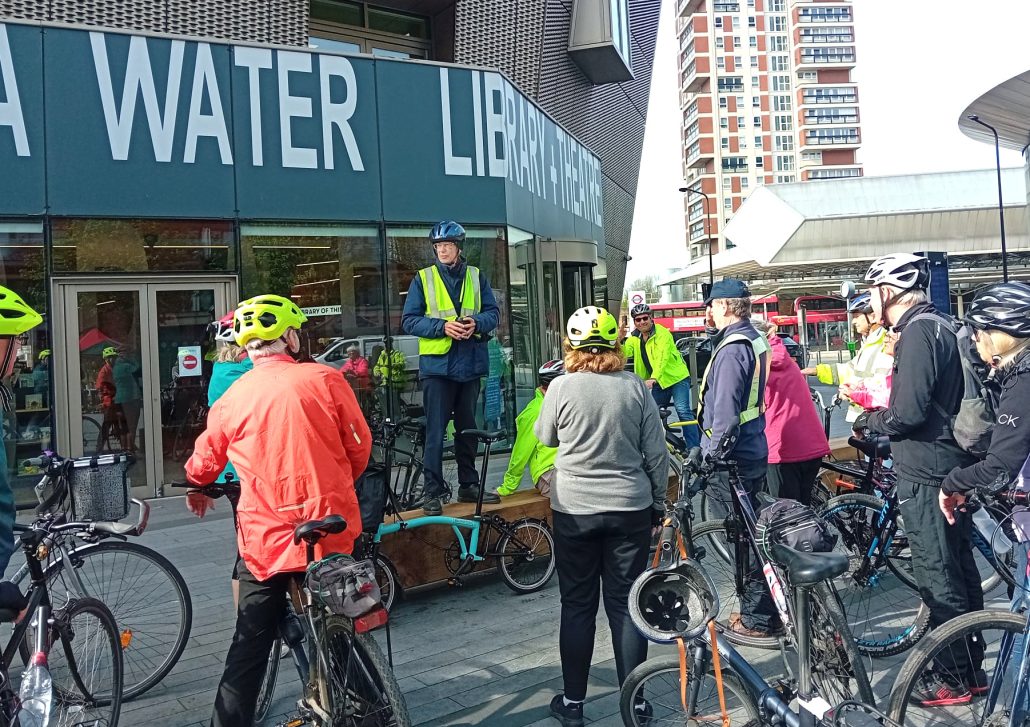
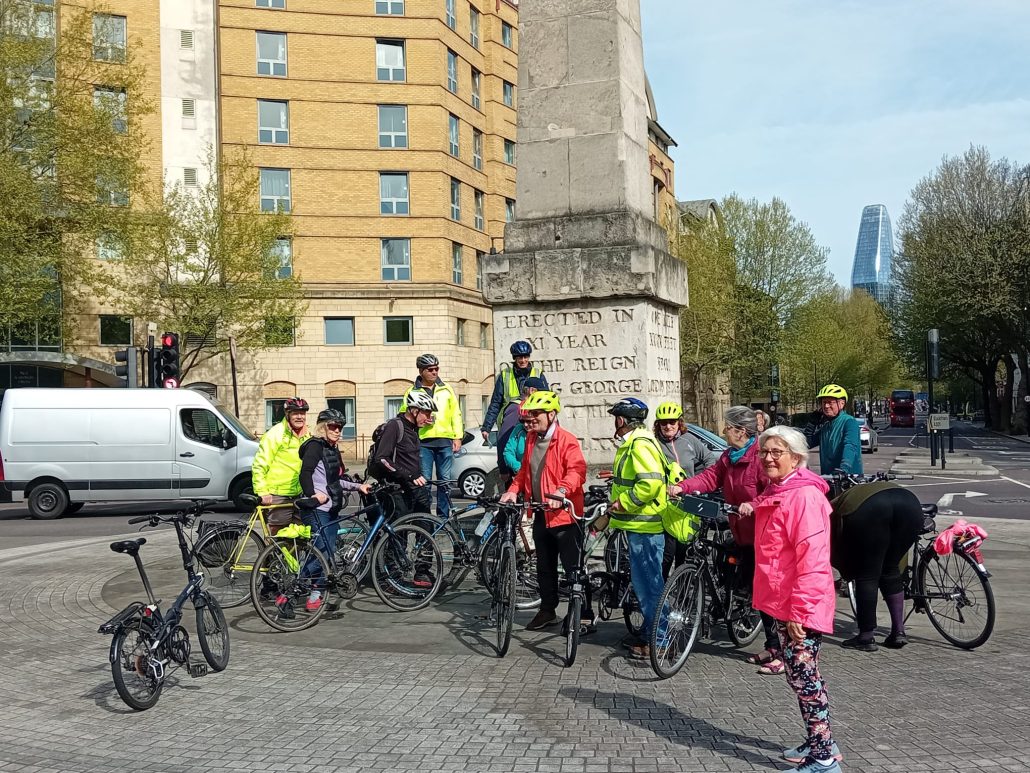
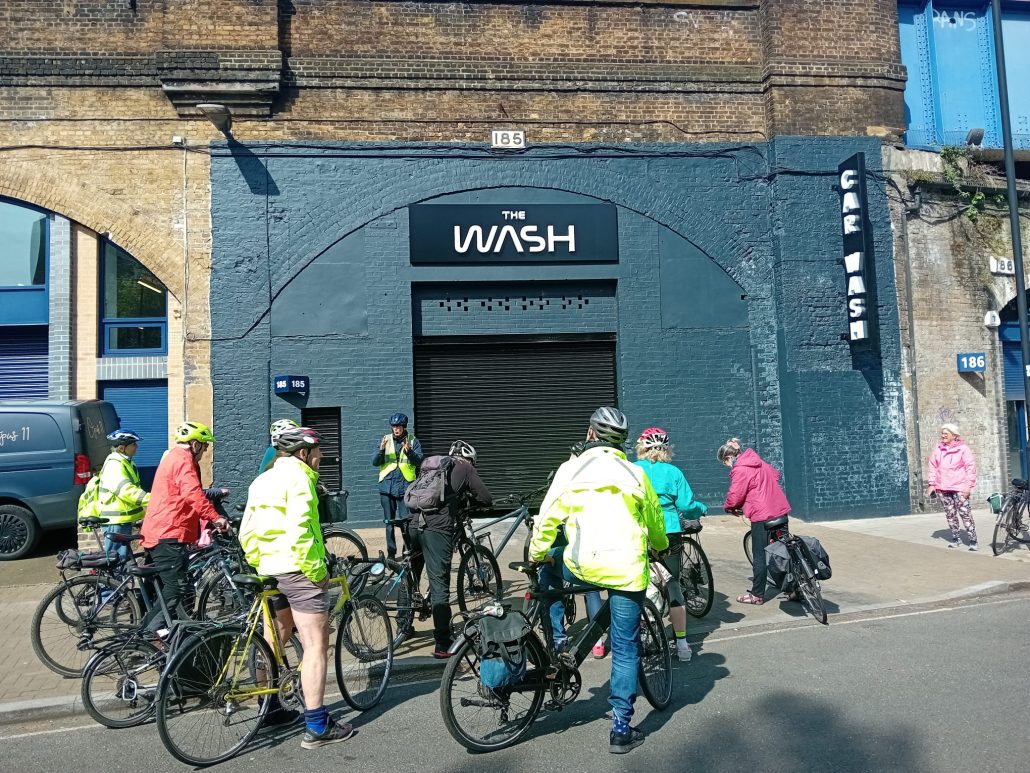
Report from Ride Leader John S.
We left as a group of 14 from Canada Water at 10am on a sunny Saturday morning to follow a route along roads that appear on Darton’s 1814 map of London (with just two small links across points where no road existed at that time).
We entered the route at Jamaica Road, following through to Neckinger, Grange Walk, Grange Road and into Long Lane, which led us to Borough High Street and then into London Road, and so to the Obelisk. Time for a pause, a group photo, and a chance to hear the story of this wonderful memorial erected in 1771 in St George’s Circus at the foot of Blackfriars Road, following the building of Blackfriars Bridge, the third bridge across the Thames. Replaced on the occasion of Queen Victoria’s Diamond Jubilee by a clocktower, the obelisk was at last restored to its rightful place in 1998, after an absence of 101 years.
On we went….our next stage brought us around a loop through streets that were once lined with rows of houses, appearing on Darton’s map as Canterbury Row, Church Row, Deans Row and Manor Row (echoes of which persist in today’s street names), and ending in a great curve that forms one of the most eye-catching features of the map. Its shape can still be seen today where Walworth Road sweeps around through Newington Butts into Kennington Road.
Our loop complete, on we pressed, making our way to Hercules road, the one-time home of the inventor of the circus, Phillip Astley. The street takes its name from his grand house, Hercules Hall, named after his favourite act, ‘La Force d’Hercules’, in which a team of acrobats formed a great pyramid.
We had a leisurely coffee stop at Lower Marsh Market, and then made our way back along the river, stopping briefly at the Palace of the Bishops of Winchester in Clink Street, whose destruction by fire in 1814 was too apposite a story to miss…
Back to Ride Report 2024 Index
Back to Healthy Rides Home page
